I arrived at the bus station wondering whether I would be able to leave Kohima. However, in the end it was actually pretty straight forward and I got the ticket with no problems. Whilst waiting and attempting to find out whether the tyre issue had been resolved, I met two guys one from France and the other Dutch. The Frenchman ended up travelling on my bus though he was lucky to get the chance to sit at the front of the bus. The Dutch seemed mostly disillusioned with Nagaland and left for Assam.
Like the journey with Dieter and Dominique some two years ago, I was at the back of the bus
. Again I was going to find out that this was a bad idea and unlike in 2013, the road was in a far worse state.
As the road leaves Kohima it climbs into the hills and enjoys a new layer of bitumen. At the beginning I was treated to spectacular views of the Naga Hills and far out to the Assamese Plains. However, when you enter the Rengma tribal area that it deteriorates into a condition only slightly above that in the Konyak district. Whereas in Konyak I have been fortunate to travel by Sumo, this time I suffered greatly in the back of the bus. Plagued by holes in the floor and open windows I was quickly covered in a layer of chocking dust and everyone around me was huge discomforted. This though was minor compared with the pain caused by the reckless driving. Twice I nearly hit my head on the roof of the bus (a difficult feat unless the driver was going too fast) and landed down injuring my back, everyone yelled at the driver and in the end he listened but by then it was too late
. The injury to my neck would plague me for days. The stretch of the road that crosses Rengma territory is quite small, but its very bad. The former chief minister was not from the Rengma tribe and it seems was little interested in them or anyone’s welfare who was driving through their territory. He built a disused airstrip in his own village - if anyone need proof of his mismanagement.
When we finally arrived in Wokha in a haze of dust the town looked as unappealing as my previous passing visits. As the bus stopped to allow me to leave, the Frenchman remarked “you must be mad to want to stay here!” I replied that it was who you knew in Nagaland that determined the quality of the experience. As as the bus doors opened, Steve Odyuo said “welcome Rupert” in a loud deep voice and shook my hand.
Steve is a friend of Nino’s who had kindly offered to show me around Wokha and his home village
. I actually did not know that much about him until I arrived, but soon realised over the course of our conversations that he was an environmentalist and wildlife man. Most impressively he was instrumental in setting up the “Save the Amur Falcon” campaign - which Nino had told me about. This successful campaign has reversed the decline of the Amur Falcon as it migrates from China to Southern Africa. The Falcon’s most important resting ground on that huge journey is here in the Wokha district and Steve is still working hard to change the preconceptions of the locals. I instantly liked this man from the Lotha tribe and we went straight to his house for a coffee and a chat. Within minutes we both realised we shared the hobby of bird photography and soon he was planning my stay in Wokha in great detail.
His house was just off the main dusty road to Kohima and was a historic wooden house built around an attractive courtyard. Once inside, the traffic and the dust seemed along way away
. His lounge was equally attractive with many black and white family photos adorning the walls and several impressive Mithune skulls. He suggested I stay at the circuit house and we left to check it out. After my experience at the circuit house in Mon I was initially concerned, but this place was a far cry from there. It was much cleaner for a start and the rooms were large. Downstairs they had a private members club complete with pool table and powerful sound system and even though the place was being painted, it was very welcoming. The staff were friendly, the food good, including brown bread (wonderful). I was certainly happy there.
Immediately we left to explore the village of Longsa on the ridge south of the town. This village was actually built along the ridge of the hills, like its namesake in the Ao district which I had visited in 2013. A collection of scrappy shacks had spread to the main road, but along the ridge it looked quite similar to the Ao counterpart. At the beginning of the old village were several steps that lead up to the old gate and a large tree. Here the villagers used to believe that the rocks would close at night preventing access to the village after dark - such were the old beliefs. Nowadays the views from the ridge were spectacular on both sides and the walk through the village was interesting and illuminating, especially with Steve to explain everything to me
.
As we went further into the village we could see Wokha Town stretched out below a tall mountain. This was Mount Tiyi and this is where the Lotha’s believe people’s souls travel after death. He went on to tell me that the Lothas also say there is a constantly flowing spring inside a cave on that mountain which is referred too as the “water of the souls”. Further into the village we came across several monoliths erected in front of houses. Here we also encountered some women weaving the Lotha shawls, and I was shown all the ones the ladies were making.
We eventually left Longsa and travelled across Wokha to the Baptist Settlement on the opposite ridge. Here Steve introduced me to the Pastor, who explained to me the history and Missionary history of Wokha. It transpires that Wokha is a relatively new town. It was the British who were interested in establishing Wokha as the capital of Nagaland due to its central location and proximity to the railhead at Dimipur and the Assamese border. However they eventually decided against this option as there was not a reliable water source and they settled on Kohima instead. The British also experienced several skirmishes with the Lothas at first, the most famous resulting in the death and ritual head decapitation of one Corporal Beckett in the 19th Century. This lead to severe reprisals and many homes were destroyed by the British in and around modern day Wokha.
The British presence in Wokha though was small, but the translator working for them was Steve’s grandfather. He was also the man responsible for the development of Wokha itself and it was interesting learning about his stories. This grandfather was not the only famous ancestor of Steve as his other grandfather was well known and well respected for having survived a tiger attack whilst in working his field. He “grabbed the animals tongue, during the struggle. This enabled the other villagers to reach him and spear the animal!” Steve recounted.
The Pastor went on to tell me about the arrival of Baptism in Wokha. The first Baptist Minister arrived in the 19th Century but was unable to stay long due to his wife’s illness and had to return to the USA. Consequently it was the Nagas based in the Baptist Missions of Mokokchung who converted the Wokha Nagas and the American involvement was tiny until 1947 when Howard and Harriet Houston arrived from Oregon. I wondered what these two missionaries would have thought of Nagaland at that time. Yet, when I posed this question to the Paster he revealed that they had written a diary which the Wokha Baptist Church had published in the 1990s. He then kindly gave me a copy plus a dictionary of English into Lotha written by the first missionary almost 150 years ago. This was all very interesting and we then drove up to the lookout above the Mission, where the community was building a Baptist school. Here on the hill top, Steve’s brother in law was constructing a new water tank that would benefit the whole of Wokha.
That night back at the Circuit House I met several of Steve’s friends before heading off to bed. The next morning was an early morning start as we were hoping to see some birds. We left at 6.00am and headed down the mountainside towards the reservoir at the Doyan River Dam. Just before the village of Englan, we stopped just next to the road where some tall trees were flowering with bright red flowers. Steve was right about birdwatching being possible in Nagaland, for as we sat silently in the long grass we witnessed Starlings, Drongos and others feeding. Considering the amount of catapulting and shooting of wild birds by the Nagas, it was comforting to see so many birds that morning. Yet it was not surprising to see they kept their distance and they were difficult at that range to photograph. Patience is required to bird watch in Nagaland, however I was still amazed that we saw so much.
As the temperature started to rise we drove through the interesting village of Englan to Steve’s home village of Riphyim. Here we saw spectacular views of the Doyan River Dam, which is where the Amur Falcons congregate during their migration from China to Southern Africa. This occurs in spectacular swarms twice a year and the birds were being netted during these swarms by the locals and eaten. The Save the Amur Falcon campaign started by Steve has put a stop to this netting and hopefully ensured a future for the spectacular wildlife event, “but this is an ongoing project,” Steve mentioned.
From the his above the Doyan Reservoir, Steve explained the camping and trekking experience he will soon offer backpackers in the area, plus told me of the other adventure sports that are possible in this area including rock climbing.
Riphyim has some basic accommodation. It is a government tourist lodge consisting of self contained cottages and a dormitory with great views. The only downside is the lack of food as people need to bring their own and whilst getting there and back from Wokha is possible, currently it is not easy. Nevertheless as a village retreat the cottages looked great and during festival time this must be an excellent experience. Riphyim itself was an interesting village. Like Englan it is amazingly friendly, with attractive little brick walled lined narrow lanes, old steel roofed houses and village life spilling out of the houses. Certainly little English is spoken but everyone is so friendly it did not matter.
We managed some more birdwatching in the afternoon spotting several sunbirds on the roadside back to Wokha. But the biggest thrill was when we spotted some 4-5 wild elephants moving up the valley from the top of the hills. We were over one kilometre away (which was good considering how dangerous these animals are, mentioned Steve) so we need binoculars and a long lens. However this was great. I was under the impression there were no large wild animals left in Nagaland, but Steve quickly told me there were hundreds of elephants, especially in this area. These elephants are actually his latest Eco project and he is working on a “living with Elephants” programme.
The next morning I was due to return to Kohima and kindly Steve gave me a lift. This kindly excused me from another appalling ride on that Wokha to Kohima road and soon I was back in Kohima at Morong Lodge in time for dinner.
After the times I had dismissed Wokha (after travelling through the town en route to Mokokchung) as just a dusty uninteresting town, my short visit here was a revelation. It just goes to emphasis that all interested visitors to Nagaland need to spend time in these towns and dig deeper into their history, culture and surrounding villages in order to gain a rich experience in this fascinating state.
Wildlife, History, Bad Roads, Elephants & Dust
Friday, March 13, 2015
 Wokha, Nagaland, India
Wokha, Nagaland, India
Other Entries
-
95Blue Moon, Salt Flats, Crafts
Jan 0270 days prior Bhujodi, Indiaphoto_camera5videocam 0comment 0
Bhujodi, Indiaphoto_camera5videocam 0comment 0 -
96Calico Musuem, Festival Prep, Street Life
Jan 0666 days prior Ahmedabad, Indiaphoto_camera5videocam 0comment 0
Ahmedabad, Indiaphoto_camera5videocam 0comment 0 -
97Leopards, Shepherds, Turbans and Aristocrats
Jan 1161 days prior Bhenswara, Indiaphoto_camera5videocam 0comment 0
Bhenswara, Indiaphoto_camera5videocam 0comment 0 -
98Birds, Fog, Bad Internet, Old Friends
Jan 1458 days prior Jodhpur, Indiaphoto_camera7videocam 0comment 0
Jodhpur, Indiaphoto_camera7videocam 0comment 0 -
99Tigers Tigers Tigers Tigers and oh Tigers
Jan 1755 days prior Sawai Madhopur, Indiaphoto_camera6videocam 0comment 0
Sawai Madhopur, Indiaphoto_camera6videocam 0comment 0 -
100Trains, Rodents, Rip offs, Delhi and Gentle
Jan 2547 days prior Delhi, Indiaphoto_camera3videocam 0comment 0
Delhi, Indiaphoto_camera3videocam 0comment 0 -
101Sand, Masks, Forest Man, Monks & Bamboo
Feb 0239 days prior Majuli, Indiaphoto_camera8videocam 0comment 0
Majuli, Indiaphoto_camera8videocam 0comment 0 -
102Julius, Gibbons, Park Fees, Tea & Gymkhana
Feb 0536 days prior Jorhat, Indiaphoto_camera5videocam 0comment 0
Jorhat, Indiaphoto_camera5videocam 0comment 0 -
103Houseboats, Dolphins, Rain and Animal Planet
Feb 1031 days prior Tinsukia, Indiaphoto_camera5videocam 0comment 0
Tinsukia, Indiaphoto_camera5videocam 0comment 0 -
104Tezu family home, TV Mike, Huts, Cows, River Wash
Feb 1427 days prior Tezu, Indiaphoto_camera5videocam 0comment 0
Tezu, Indiaphoto_camera5videocam 0comment 0 -
105Sumos, Boulders, Oranges, Idu Mishmi
Feb 1724 days prior Roing, Indiaphoto_camera5videocam 0comment 0
Roing, Indiaphoto_camera5videocam 0comment 0 -
106Motorbikes, Idu Mishmi, Hats, Illness, Scenary
Feb 1922 days prior Anini, Indiaphoto_camera9videocam 0comment 0
Anini, Indiaphoto_camera9videocam 0comment 0 -
107Nyokum Yullo, Nishi people, ferries, chain dance
Feb 2219 days prior Itanagar, Indiaphoto_camera5videocam 0comment 0
Itanagar, Indiaphoto_camera5videocam 0comment 0 -
108Paddies, Plugs, Tattoos, Weddings, Bamboo, Spirits
Feb 2417 days prior Ziro, Indiaphoto_camera5videocam 0comment 0
Ziro, Indiaphoto_camera5videocam 0comment 0 -
109Post Office, Hari's Help, Tourist Apartheid
Mar 0112 days prior Guwahati, Indiaphoto_camera3videocam 0comment 0
Guwahati, Indiaphoto_camera3videocam 0comment 0 -
110Hornbills, Eco Lodge, Birds, Elephants & Nameri NP
Mar 0310 days prior Tezpur, Indiaphoto_camera5videocam 0comment 0
Tezpur, Indiaphoto_camera5videocam 0comment 0 -
111Plans Changing, Bus tyres, early closing museums
Mar 085 days prior Kohima, Indiaphoto_camera2videocam 0comment 0
Kohima, Indiaphoto_camera2videocam 0comment 0 -
112Wildlife, History, Bad Roads, Elephants & Dust
Mar 13 Wokha, Indiaphoto_camera5videocam 0comment 0
Wokha, Indiaphoto_camera5videocam 0comment 0 -
113Wedding, More Dust, Shawls, Tensions and Sumi Food
Mar 207 days later Zunheboto, Indiaphoto_camera3videocam 0comment 0
Zunheboto, Indiaphoto_camera3videocam 0comment 0 -
114Stones, Inventions, Old Friends and Shop 65
Mar 2411 days later Mokokchung, Indiaphoto_camera5videocam 0comment 0
Mokokchung, Indiaphoto_camera5videocam 0comment 0 -
115Meeting Mr Sosangtemba Longkumer Ao
Mar 2613 days later Longsa, Indiaphoto_camera4videocam 0comment 0
Longsa, Indiaphoto_camera4videocam 0comment 0 -
116Expensive Transport, Rain, Football, Cockroaches
Mar 2815 days later Longleng Nagaland, Indiaphoto_camera3videocam 0comment 0
Longleng Nagaland, Indiaphoto_camera3videocam 0comment 0 -
117Pork, Pigs, Moon Singing, Monsoon, Footy
Apr 0119 days later Wakching, Indiaphoto_camera10videocam 0comment 0
Wakching, Indiaphoto_camera10videocam 0comment 0 -
118Aoling Festival, Rain, Easter, Rain, Rain
Apr 0624 days later Wakching, Indiaphoto_camera10videocam 0comment 0
Wakching, Indiaphoto_camera10videocam 0comment 0 -
119The Not Super Travel Co, Tea, Temples & Bye Byes
Apr 1028 days later Kamakhya, Indiaphoto_camera5videocam 0comment 0
Kamakhya, Indiaphoto_camera5videocam 0comment 0 -
12035c, Haveli, Pink City, Amber Fort, Tigers, Tigers
Apr 1533 days later Sawai Madhopur, Indiaphoto_camera5videocam 0comment 0
Sawai Madhopur, Indiaphoto_camera5videocam 0comment 0 -
121Taj, Baby Taj, carpets, arguments, fever plus 43c
Apr 1836 days later Agra, Indiaphoto_camera5videocam 0comment 0
Agra, Indiaphoto_camera5videocam 0comment 0 -
122Mud, Mangroves, Kingfishers, Boats, Storms, Otters
Apr 2240 days later Sundarbans National Park, Indiaphoto_camera10videocam 0comment 0
Sundarbans National Park, Indiaphoto_camera10videocam 0comment 0 -
123Last Days in Kolkata, Obsolete Passports, Thailand
May 0149 days later Koh Chang, Thailandphoto_camera10videocam 0comment 0
Koh Chang, Thailandphoto_camera10videocam 0comment 0 -
124Getting home, reflections and thoughts
May 1361 days later Bristol, United Kingdomphoto_camera3videocam 0comment 3
Bristol, United Kingdomphoto_camera3videocam 0comment 3

 Wokha, Nagaland, India
Wokha, Nagaland, India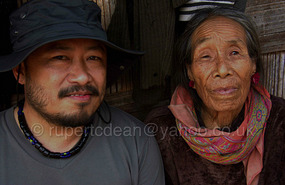
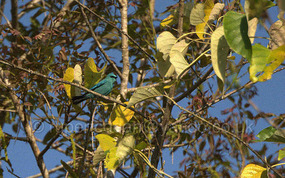
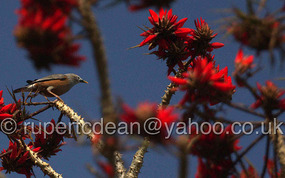
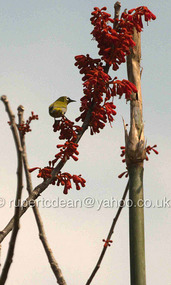
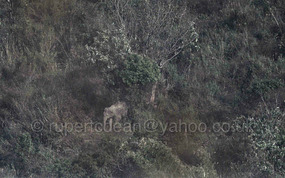



2025-05-22